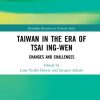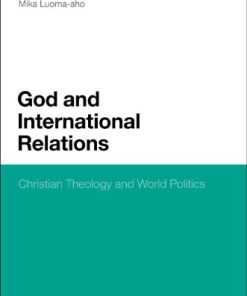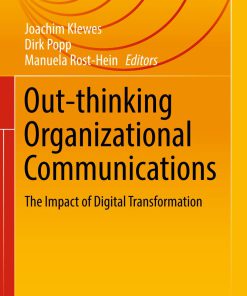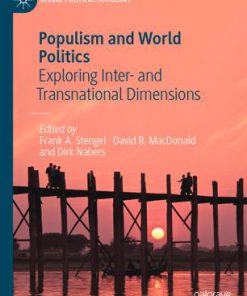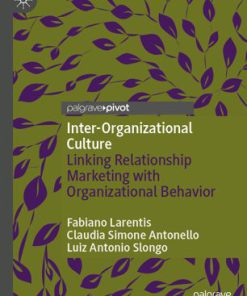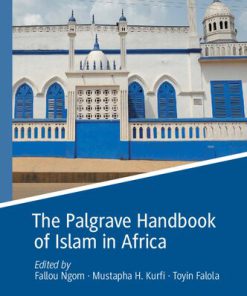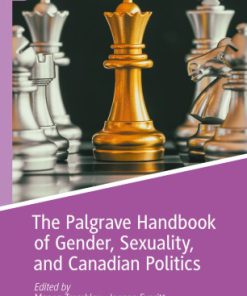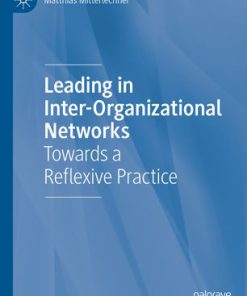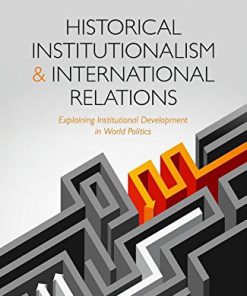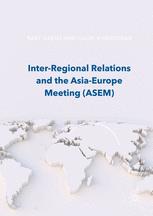Palgrave Handbook of Inter Organizational Relations in World Politics 1st Edition by Joachim Koops, Rafael Biermann 1137360397 9781137360397
$50.00 Original price was: $50.00.$25.00Current price is: $25.00.
Palgrave Handbook of Inter-Organizational Relations in World Politics 1st Edition by Joachim A. Koops, Rafael Biermann – Ebook PDF Instant Download/DeliveryISBN: 1137360397, 9781137360397
Full download Palgrave Handbook of Inter-Organizational Relations in World Politics 1st Edition after payment.
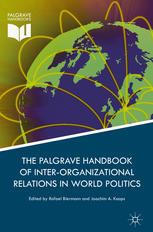
Product details:
ISBN-10 : 1137360397
ISBN-13 : 9781137360397
Author: Joachim A. Koops, Rafael Biermann
This unique handbook brings together a team of leading scholars and practitioners in order to map, synthesize and assess key perspectives on cooperation and rivalry between regional and global organizations in world politics. For the first time, a variety of inter-disciplinary theoretical and conceptual perspectives are combined in order to assess the nature, processes and outcomes of inter-organizational partnerships and rivalries across major policy areas, such as peace and security, human rights and democratisation as well as finance, development and climate change . This text provides scholars, students and policy-makers of International Relations with an exhaustive reference book for understanding the theoretical and empirical dimensions of an increasingly important topic in International Relations (IR), Global Governance and related disciplines.
Palgrave Handbook of Inter-Organizational Relations in World Politics 1st Table of contents:
Chapter 1: Studying Relations Among International Organizations in World Politics: Core Concepts an
1 Introduction
2 Conceptualizing Inter-Organizational Relations: Definitions, Demarcations, and Core Dimensions
2.1 Defining Inter-Organizational Relations
2.2 Inter-Organizationalism and Regime Interaction
2.3 Features, Forms, and Attributes of Inter-Organizational Relations
2.3.1 Material Versus Immaterial Relations
2.3.2 Degrees of Formalization
2.3.3 Frequency, Quality, and Duration of Interaction
2.3.4 Secretariat and Field Perspectives
2.3.5 Goals of Inter-Organizational Cooperation
3 The Growth of the Partnering Paradigm and the Formation of Partnerships
3.1 Actor Proliferation, Task Expansion, and Issue-Linkage
3.2 Issue Duration, Issue Density, and Political Shocks
3.3 Domain Similarity and Organizational Overlap
3.4 Rationalist and Constructivist Accounts of Partnership Formation
3.5 Multilevel Analysis of Inter-Organizational Formation
4 Cooperation, Competition, and the Management of Relations
4.1 Inter-Organizational Cooperation
4.2 Inter-Organizational Rivalry and Conflict
4.3 Managing Inter-Organizational Relations
5 The Effectiveness of Inter-Organizational Cooperation
6 Major Theoretical and Methodological Challenges
6.1 Fragmentation, Eclecticism, and the Lack of an IR-Focused Lead Theory
6.2 Transferability, Induction, and Deduction: Matching Theoretical Insights with Empirical Eviden
6.3 Generalizability: From Dyad Case Studies to Large-N Studies
6.4 Accuracy: From Desk Research Through Interviews to ‘Participant Observation’
7 Approach and Structure of the Handbook
Notes
Bibliography
Part I: Theoretical and Conceptual Approaches
Chapter 2: IR Paradigms and Inter-Organizational Theory: Situating the Research Program Within the
1 Network Theory
2 Regime Theory and the ‘Institutionalist Turn’
2.1 Organizations versus Institutions
3 Theoretical Refinements
3.1 Resource-Dependency Theory
3.2 Agency Theory
4 The ‘Transnational Turn’
5 Prospects of New ‘Bisociation’?
Bibliography
Chapter 3: Organization Theory and Cooperation and Conflict Among International Organizations
1 Introduction: Inter-Organizationalism in IR Theory and Organization Theory
2 International Relations Theories and Inter-Organizational Relations
2.1 Inter-Organizational Relations and International Regimes
2.1.1 Regime Interaction
2.1.2 Regime Complexes
2.2 Constructivist Perspectives on Inter-Organizational Relations
2.2.1 Epistemic Communities
2.2.2 IO Culture and Professions
3 Organizational Theories of Inter-Organizational Relations
3.1 New Institutional Economics
3.1.1 Transaction Cost Theory
3.1.2 Principal-Agent Theory
3.2 Organizational Environments and Inter-Organizational Relations
3.2.1 Neo-Institutional Theory
3.2.2 Organizational Ecology
3.2.3 Resource Dependence Theory
3.2.4 Contingency Theory
3.2.5 Networks
4 Conclusion: Further Opportunities for Cross-Fertilization
Notes
Bibliography
Chapter 4: The Rational Design of Relations Between Intergovernmental Organizations
1 The Design of International Institutions
2 The Design of Relations Between Organizations
2.1 Formalization
2.2 Intensity
2.3 Symmetry
2.4 Standardization
3 Conclusion: Future Research
Notes
Bibliography
Chapter 5: Social Network Analysis
1 Networks as Actors: Heuristic and Governance Approaches
2 Social Network Analysis: Core Concepts
2.1 Network Position: Centrality
2.2 Network Position: Subgroups
3 Social Network Theorizing: Relational Mechanisms
3.1 Rationalist Mechanisms
3.2 Constructivist and Cognitive Mechanisms
3.3 Advantages and Shortcomings
4 Social Network Analysis And Its Transferability To Inter-Organizational Relations
4.1 Social Network Analysis in Inter-Organizational Relations Research Designs
4.2 Challenges
5 Future Directions for Research
Notes
Bibliography
Chapter 6: Resource Dependence Theory
1 Resource Dependence Within Organization Theory
1.1 A Brief History of RDT
1.2 Core Assumptions
1.3 Key Findings
1.3.1 Specialization and Cooperation
1.3.2 Determinants of Dependence
1.3.3 Strategies for Managing Dependence
1.4 Shortcomings of RDT
2 Resource Dependence Among International Organizations
2.1 Transferability of RDT to IGOs
2.2 RDT and IGOs: An Emerging Research Program
3 Conclusions: Future Directions of Research
Notes
Bibliography
Chapter 7: Population Ecology: How the Environment Influences the Evolution of Organizations
1 Theory and Empirical Application
2 Transferability and Empirical Limits
3 Population Ecology as Conceptual Metaphor?
4 Conclusions
Notes
Bibliography
Chapter 8: Sociological Approaches
1 Organization Studies in International Relations
2 Sociological Approaches to Inter-organizational Relations
2.1 Resource Dependence
2.2 Sociological Neo-Institutionalism
2.3 Organizational Fields
3 Critical Appraisal of Sociological Approaches
4 Alternative Approaches to Inter-organizational Relations
4.1 Luhmann’s Systems Theory
4.2 American Pragmatism
5 Conclusion
Notes
Bibliography
Chapter 9: Inter-Organizationalism in International Relations: A Multilevel Framework of Analysis
1 Introduction
2 A Multilevel Framework for Inter-Organizational Analysis: General Overview
3 Understanding and Applying the Five Levels of Inter-Organizational Relations
3.1 The International and Systemic Level: Opportunities and Constraints
3.2 The Member State/National Level: Key Decision-Making Powers
3.3 The Role of the Individual: Initiators, Facilitators and Boundary Spanners
3.4 The Role of the Bureaucracy
3.5 The Inter-Institutional and Inter-Secretariat Level
4 Conclusion and Suggestions for Further Research
Notes
Bibliography
Chapter 10: The Evolvement of International Secretariats, Executive Heads and Leadership in Inte
1 Why International Secretariats and Executive Heads?
2 Emergence and Relevance of IGO Secretariats and Early Inter-Organizational Relations
3 Inter-Organizational Relations During the League of Nations (1919–45)
4 Inter-Organizational Relations in and Beyond the UN System 1945–70
5 Inter-Organizational Relations in and Beyond the UN System After 1970
5.1 Personal Ambitions in Health and Food
5.2 Who Provides Leadership? The Joint Creation of UNAIDS
5.3 Inter-Organizational Relations in the North–South Divide of the 1970s
5.4 IGO Survival Under Change in Inter-Organizational Relations in International Trade
6 The Emergence of Country Clubs and Their Effects on Inter-Organizational Relations
7 Conclusion
Notes
Bibliography
Chapter 11: The Role of International Bureaucracies
1 Conceptualizing International Bureaucracies
2 The Relevance of International Bureaucracies for Inter-Organizational Relations
3 Theories and Approaches
3.1 Principal–Agent Theory
3.2 Sociological Institutionalism
3.3 Bureaucratic Politics
3.4 Organization Theory
4 Recommendations for Future Research
Notes
Bibliography
Chapter 12: The Principal–Agent Model and Inter-Organizational Relations
1 Parameters
2 Literature
3 Shortcomings and Critiques
4 Transferability to Inter-Organizational Relations
4.1 The UN Security Council as Agent
4.2 The UN Security Council as Principal
5 Case Study
6 Conclusion
Notes
Bibliography
Chapter 13: Configurations in Inter-Organizational Cooperation: From Dyads to Organizational Fie
1 An Open Systems Perspective on Organizations
2 Organizational Fields
3 Using Organizational Fields as an Analytical Method
4 Conclusion
Note
Bibliography
Chapter 14: Nested Institutions
1 Nested Institutions: Conceptual Clarification and Basic Features
1.1 Nested Institutions: What Is It About?
1.2 Issues of Order and Organizational Hierarchy
1.3 Encompassing and Encompassed Institutions in a Nested Environment
2 Nested Institutions: Summary and Further Research
Bibliography
Chapter 15: NGO–NGO Relations
1 Introduction
2 Different Ways of Conceptualizing NGO–NGO Relations
2.1 Network Approaches to Analyzing NGO–NGO Interaction
3 Theoretical Approaches to Explaining NGO–NGO Relations
4 Intra- and Inter-Network Relations and the Evolution of Networks
5 Conclusion and Suggestions for Further Research
Notes
Bibliography
Chapter 16: Legitimizing Inter-Organizational Relations
1 Conceptualizing Legitimacy and Legitimation
2 The Legitimation of International Organizations
3 Legitimation Among Organizations
3.1 Subjects and Objects of Legitimation Among Organizations
3.2 Legitimation Criteria and Strategies
3.3 Legitimacy Assessments and the Willingness to Cooperate
4 Recommendations for Future Research
Notes
Bibliography
Chapter 17: Power in Inter-Organizational Relations
1 The Centrality and Evasiveness of Power Analyses
2 Different Forms and ‘Faces’ of Power
3 Explaining the Neglect of Power in Inter-Organizational Relations
4 Inter-Organizational Relations Among Security Institutions
5 Injecting Power into the Analysis of Inter-�Organizational Relations
6 New Avenues for Research
Notes
Bibliography
Chapter 18: Assessing Influence Between International Organizations
1 Introduction
2 What Is Inter-Organizational Influence?
3 How Much Influence?
4 What Can Be Influenced?
4.1 Politics
4.2 Institutional Development
4.3 Cognitive and Normative Structures
4.4 Policies and Spheres of Activity
5 Final Remarks
Note
Bibliography
Chapter 19: Trust Among International Organizations
1 Conceptualizing Trust
1.1 Ontological Key Features of Trust
1.2 Rationalist Understandings of Trust as Calculation
1.3 Extra-Rationalist Accounts of Trust as Risk-Suspension
1.4 Integrative Approaches
2 Trust and Its Relation to Mistrust
3 Inter-Organizational Trust Across Levels of Analysis
4 Trust-Building Between Organizations
5 Consequences of Trust
6 Measuring Trust Between Organizations
7 Shortcomings and Avenues for Future Research
Notes
Bibliography
Part II: Policy Areas
Chapter 20: Inter-Organizational Coordination in Peacebuilding
1 Literature On Inter-Organizational Coordination In Peacebuilding
1.1 Different Approaches in Peacebuilding
1.2 Autonomy Concerns
1.3 Divergent Organizational Cultures
2 IO Cooperation in Peacebuilding Missions
2.1 Bosnia and Herzegovina
2.2 Kosovo
3 Conclusion
Notes
Bibliography
Chapter 21: Regime Complexity and Resource Dependence Theory in International Peacekeeping
1 Regime Complexity and Resource Dependence
1.1 Regime Complexity
1.2 Resource Dependence Theory and Resource Exchange
2 The African Peacekeeping Regime Complex
3 Empirical Case Studies: Somalia and the Central African Republic
3.1 Somalia
3.2 The Central African Republic
4 Conclusion
Bibliography
Chapter 22: Dark Networks: The Terror–Crime Nexus
1 Review of Research and Theories
1.1 Organizational Design and Structure
1.2 Dynamic Processes
1.3 Theories and Methods
2 Directions for Future Research
Bibliography
Chapter 23: The Theory and Practice of International Humanitarian Relief Coordination
1 The Structure of International Humanitarian Relief
2 The United Nations and Humanitarian Relief
3 Theorizing the Humanitarian Relief System
4 Conclusions
Notes
Bibliography
Chapter 24: The Global Governance of Food Security
1 Mapping the Organizational Dimensions of the Global Governance of Food Security
1.1 Nutrition
1.2 Agricultural Production
1.3 Agricultural Trade
1.4 Food Safety
1.5 Human Right to Food
1.6 Agriculture and Development
1.7 Agriculture and Climate Change
2 Institutional Characteristics of the Global Governance of Food Security
3 Inter-Organizational Relationships of Global Governance of Food Security
3.1 Cooperation
3.2 Rivalry
4 Conclusion and Suggestions for Further Research
Notes
Bibliography
Chapter 25: Inter-Organizational Relations in the Field of Democratisation: Cooperation or Deleg
1 State of the Art
2 Categorizing the Cooperation Between the EU, the OSCE, and the CoE
3 Empirical Steps of Formalization Between the EU, the OSCE, and the CoE: The Post-Cold War Co
3.1 The EU and the OSCE: Late Formal Acknowledgement at the Level of Rules of Procedure
3.2 The EU and the CoE: Intense Practical Cooperation and Late Joint Statements
3.3 The CoE and the OSCE: Close Working Connections and Late IO–IO Formalization
4 Cooperation or Delegation: Empirical Findings on Inter-Organizational Cooperation Between the EU
4.1 Triadic Cooperation in the Area of Election Observation
4.2 Capacity Building in the Areas of Good Governance and Rule of Law: Asymmetric Relations Bet
4.3 Capacity Building in Constitutional and Legal Matters: Division of Labour at Working Level Be
4.4 Lack of Cooperation in the Area of Media Assistance
5 Theory-Guided Reflection and Concluding Remarks
Notes
Bibliography
Chapter 26: The Council of Europe and Cooperation with Civil Society
1 State of Research on IGO–CSO Cooperation
2 The Multilateral Traditionalism of the Council of Europe
3 The Council of Europe and Civil Society Cooperation
4 Major Obstacles for Efficient Cooperation
4.1 Critique of the Council of Europe’s Work with CSO’s
4.2 The INGO Conference: Pitfalls of Over-Institutionalization
4.3 The Politics of IGO–CSO Cooperation
4.4 A Hardly Conducive Organizational Culture
5 Conclusions
Notes
Bibliography
Chapter 27: Pushed Toward Partnership: Increasing Cooperation Between the Bretton Woods Bodies
1 Open Questions and Main Thesis
2 The Division of Labor in Theory and Practice
3 Competing Schools of Thought
4 Strengthening Collaboration, 2000–07
5 Equal Partnership, 2008–14
6 G20 Summit Governance of IMF–WBG Partnership
7 Conclusion: The Incomplete Partnership
8 Recommendations for Further Research
Notes
Appendixes
Appendix 2: IMF/WBG-Related G20 Commitments, 2008–13
Appendix 3: IMF/WBG-Related G20 Commitments by Focus, 2008–13
Appendix 4: IMF/WBG-Related G20 Commitments by Issue, 2008–13
Appendix 5: IMF/WBG-Related G20 Commitments by Institutional Context, 2008–13
Appendix 6: IMF–WBG-Related G20 Commitments by Cause, 2008–13
Bibliography
Chapter 28: Organizational Interactions in Global Energy Governance
1 General Overview of the Policy Field and Literature
2 The Global Energy Architecture and the IEA
3 An Organization-Set of the IEA
3.1 The IEA and OPEC
3.2 The IEA and ECT
3.3 The IEA and G8/G20
3.4 The IEA and IRENA
4 Conclusion and Suggestions for Further Research
Notes
Bibliography
Chapter 29: The Cooperation of the European Union with Employer and Labor Associations
1 Empirical Overview
2 Research Questions and Findings
3 Perspectives for Future Research
4 Conclusions
Notes
Bibliography
Chapter 30: IGO Relations in the Anti-corruption Realm and in Promoting Integrity in Public Pro
1 Anti-corruption and the Study of Inter-organizational Relations
2 IGOs Involved in the Anti-corruption Realm
2.1 IGOs Spearheading the Adoption of Anti-corruption Conventions
2.2 IGOs Raising Awareness and Increasing Knowledge About Corruption
2.3 IGOs Using Conditionality to Fight Corruption
2.4 IGOs’ Investigative Approach to Anti-corruption
2.5 Transparency and Integrity in Public Procurement
3 IGO Collaboration in the Anti-corruption Realm
4 Possible Future Research Directions
Notes
Bibliography
Chapter 31: Relations Between International Organisations in Combating Climate Change
1 Introduction
2 Climate Change as a Global Governance Issue
3 Inter-organisational Interaction
4 The Climate Organisational Complex and Its Inter-organisational Interactions
4.1 The Organisational Complex and Its Fragmentation
4.2 Organisational Interaction
4.3 Interplay Management
5 Conclusions
Notes
Bibliography
Chapter 32: Conclusions
1 The Balance of Review and Exploration
2 Major Theoretical and Empirical Findings
3 Future Research Directions
People also search for Palgrave Handbook of Inter-Organizational Relations in World Politics 1st:
palgrave international handbook of human trafficking
palgrave handbook of servant leadership
palgrave handbook of sexual ethics
palgrave handbook
palgrave handbook of male psychology
Tags: Palgrave Handbook, Inter Organizational Relations, World Politics, Joachim Koops, Rafael Biermann
You may also like…
History - World History
God and International Relations Christian Theology and World Politics 1st Edition Mika Luoma-Aho
Business & Economics
Politics & Philosophy
Populism and World Politics: Exploring Inter- and Transnational Dimensions Frank A. Stengel
Religion & Spirituality - Islam
Politics & Philosophy
Uncategorized
Leading in Inter Organizational Networks Towards a Reflexive Practice Matthias Mitterlechner
Politics & Philosophy - Social Sciences
Politics & Philosophy - Social Sciences
Inter-Regional Relations and the Asia-Europe Meeting (ASEM) 1st Edition Bart Gaens



